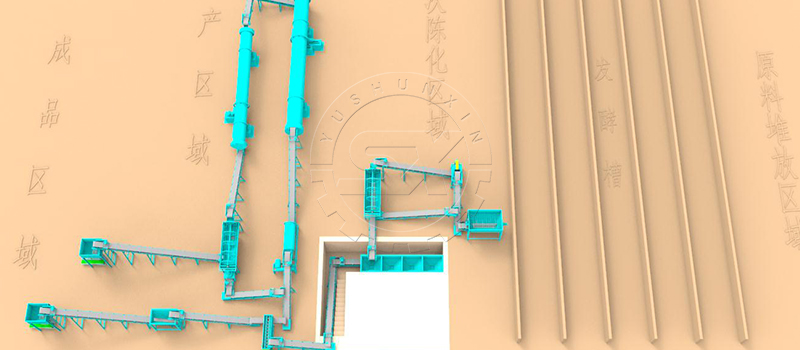Chicken farming is a rewarding venture, but one challenge that often arises is what to do with the copious amounts of chicken poop generated daily. Rather than viewing it as waste, savvy farmers and gardeners are discovering the gold mine by converting chicken manure into organic fertilizer. In this blog, we’ll explore the benefits of chicken poop disposal through composting and pelletizing, providing valuable tips for producing high-quality organic fertilizer pellets.
1. The Gold in Chicken Poop:
Chicken manure is rich in essential nutrients like nitrogen, phosphorus, and potassium, making it an excellent natural fertilizer. However, its raw form can be too potent and potentially harmful to plants due to high ammonia content and the presence of pathogens. By composting and pelletizing, we transform this waste into a nutrient-rich, safe, and convenient form that enhances soil health and promotes sustainable agriculture.
2. Composting: The First Step Toward Gold:
Composting is the initial phase in the process of turning chicken poop into quality organic fertilizer. Start by collecting fresh manure and mix it with carbon-rich materials such as straw, sawdust, or dried leaves. This combination provides a balanced carbon-to-nitrogen ratio, promoting microbial activity and breaking down the manure into a stable, nutrient-rich compost.
3. The Science Behind Composting:
During composting, maintaining the right temperature (between 131°F and 170°F) is crucial. This temperature range ensures the elimination of pathogens and weed seeds while fostering beneficial microorganisms. Regular turning of the compost pile helps aerate the mixture, accelerating the decomposition process. Here, you can use SX chicken poop composting machine to speed up this process.
4. Curing for Quality:
Allow the compost to cure for several weeks. Curing stabilizes the compost, reduces ammonia levels, and makes the nutrients more plant-friendly. Regularly test the compost for nutrient content, pH levels, and moisture to ensure it’s ready for the next phase.
5. Pelletizing: Transforming Compost into Gold Nuggets:
Investing in organic fertilizer pelletizing machine is the next step in the process. This machine compresses the compost into uniform pellets, providing a convenient and easy-to-use form of fertilizer. Adjust the machine settings to achieve the desired pellet size, and consider adding natural binders like clay or vegetable oil to enhance cohesion. Go here to learn more.
6. Drying and Screening:
Thoroughly dry the pellets to reduce moisture content and prevent clumping. Screening removes any oversized or undersized particles, ensuring a consistent product. Proper drying and screening contribute to the overall quality and shelf life of the organic fertilizer pellets.
7. Packaging and Storage:
Package the finished pellets in breathable bags or containers, clearly labeling them with information on nutrient content, application rates, and usage instructions. Store the pellets in a cool, dry place away from direct sunlight to maintain their quality over time.
8. Environmental and Economic Benefits:
By adopting this approach to chicken poop disposal, farmers not only contribute to sustainable waste management but also reduce their reliance on chemical fertilizers. The resulting organic fertilizer pellets enrich the soil, improve plant growth, and promote healthier crops while minimizing the environmental impact.
Conclusion:
Chicken poop disposal doesn’t have to be a headache; instead, it can be a valuable resource for sustainable agriculture. Composting and pelletizing chicken manure allow farmers and gardeners to harness its potential as a powerful organic fertilizer, turning what was once considered waste into gold for the soil. Embrace this eco-friendly approach to waste management, and watch your garden flourish with the benefits of nutrient-rich organic fertilizer pellets. You can visit https://fertilizerequipmentmanufacturer.com/chicken-manure-processing/ to start it.



